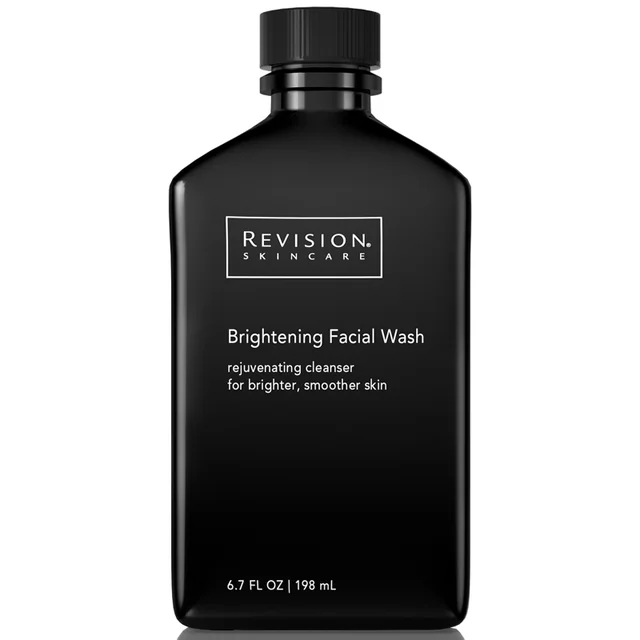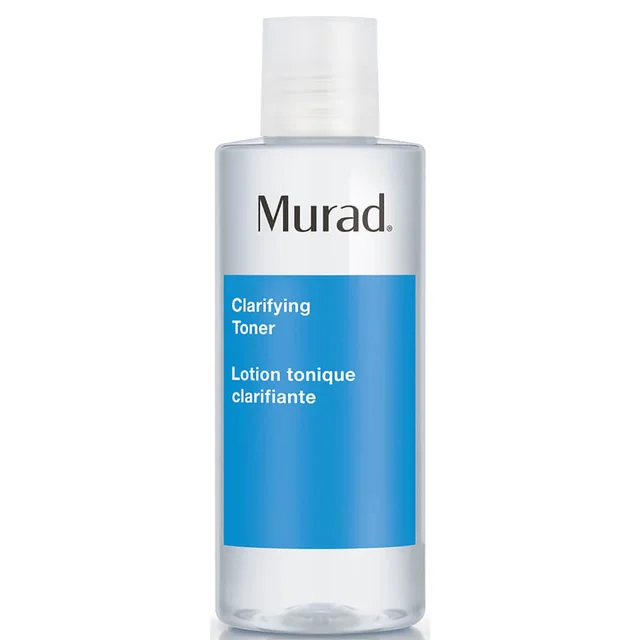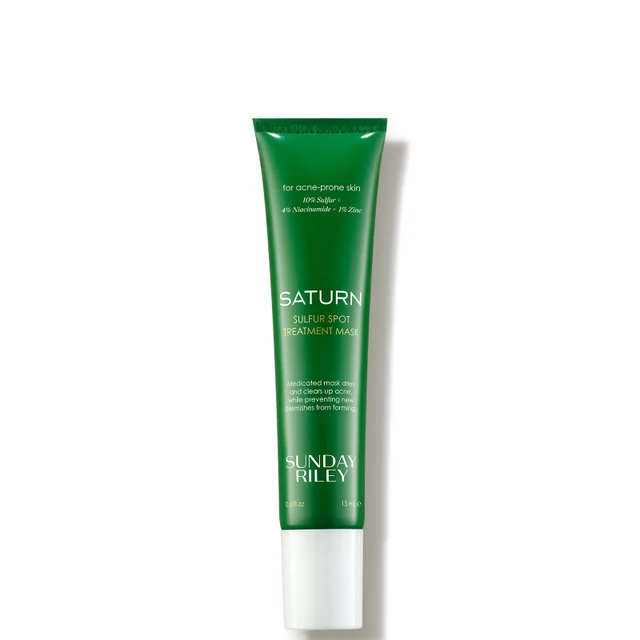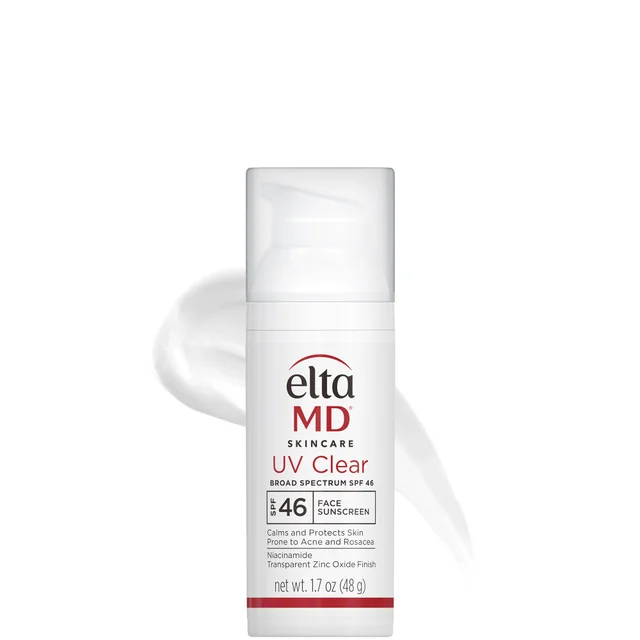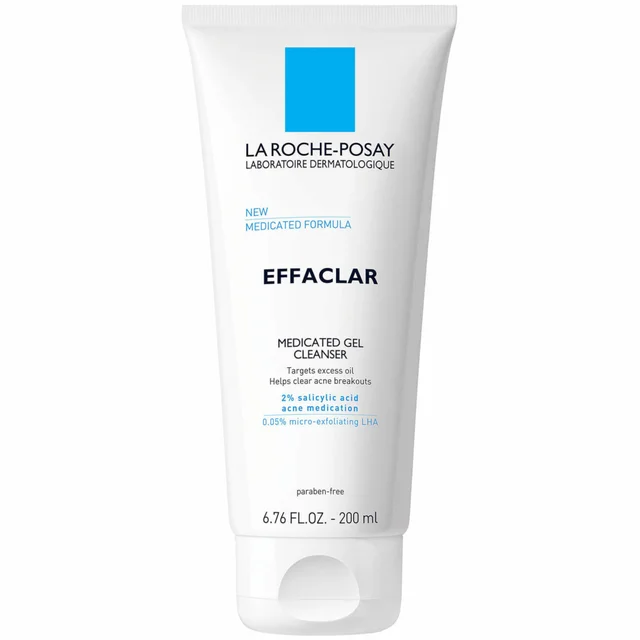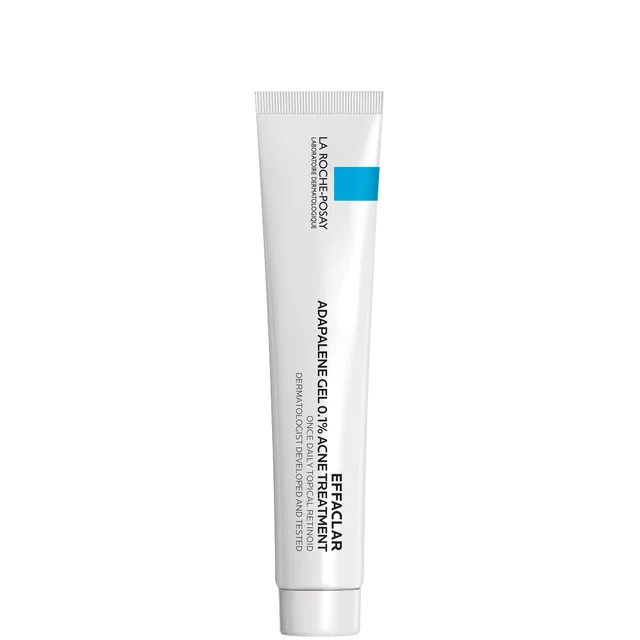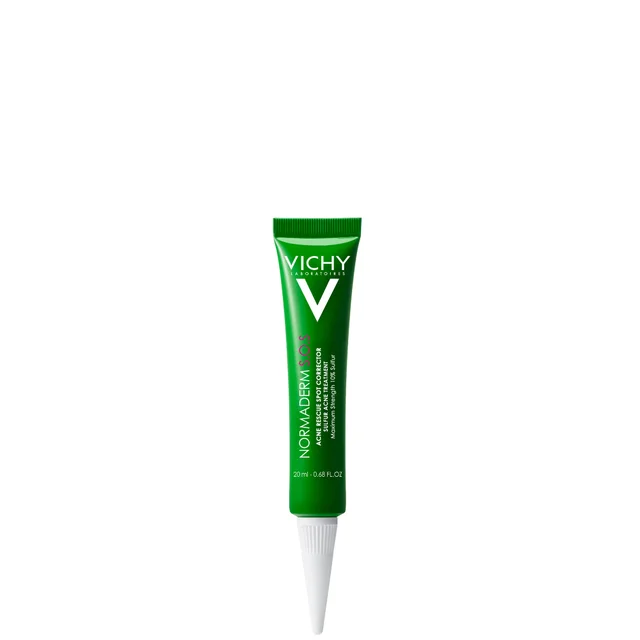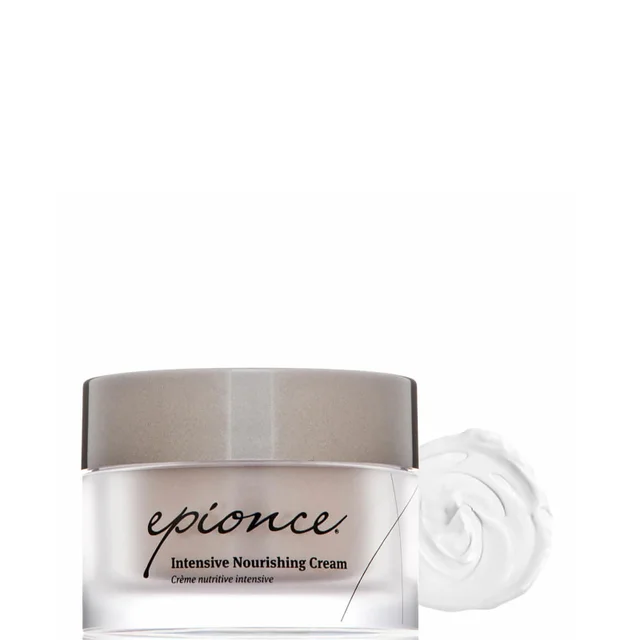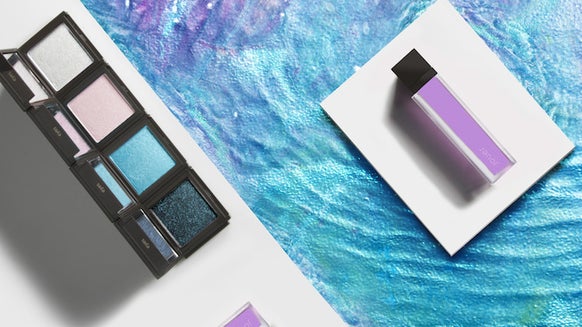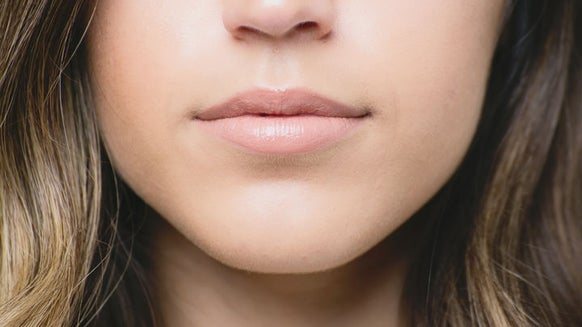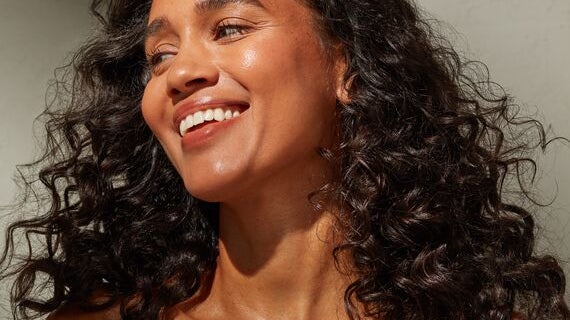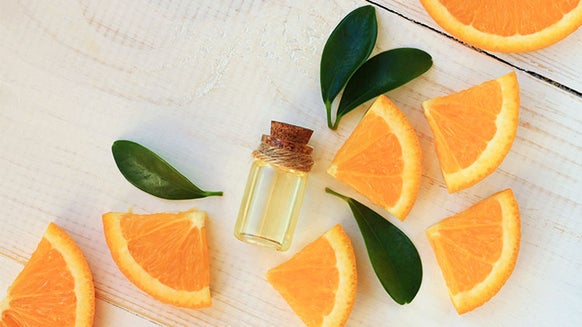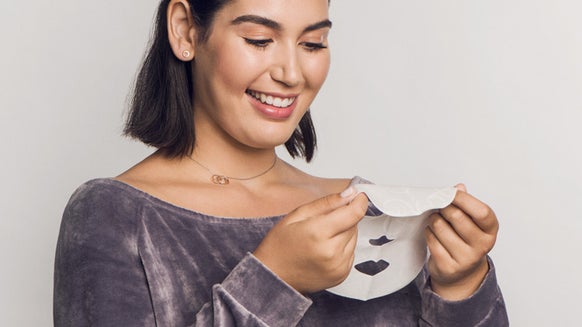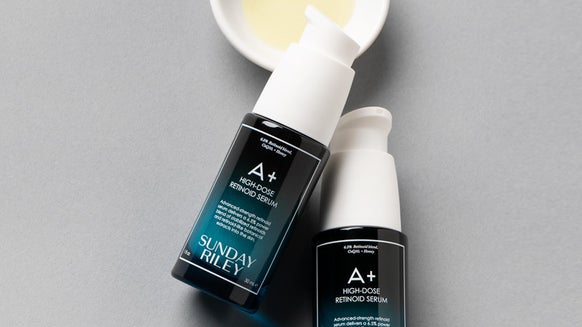The Best Skincare Routine for Acne, According to a Dermatologist
As much as you’d like acne to be something you leave behind when puberty comes to an end, those pesky red bumps have a habit of paying your skin a visit, often at the worst possible moments. Dealing with breakouts is never easy, and finding the right products to banish them can be just as frustrating. Here’s the good news, though: it doesn’t have to be complicated. With the right treatment, a tailored routine, and enough patience, you can tackle acne and get on the path to clearer, blemish-free skin. But what exactly do you need to create the best skincare routine for acne? Let’s break down everything you need to know, straight from a dermatologist.
Meet the Expert
Dr. Connie Yang - Board-certified dermatologist and Dermstore Medical Advisory Board member
What Causes Acne?
The most effective treatment for acne is one that doesn’t just target the obvious but also goes straight to addressing its source. “Acne is caused by four main factors: excess oil production, clogged pores, bacterial growth, and inflammation,” explains Dr. Yang. It also has different types, which can be identified based on their symptoms and appearance. According to Dr. Yang, the main types of acne include:
Blackheads: Small black bumps on the skin’s surface caused by clogged pores. “When the dead skin cells and sebum are exposed to oxygen, they oxidize and turn black, giving their characteristic appearance,” Dr. Yang explains. Whiteheads: Clogged pores are the main culprits behind whiteheads, but unlike blackheads, these pores remain closed, making them appear white or skin-colored. Inflammatory Papules/Pustules: This type of acne typically appears pink, red, and “angry,” says Dr. Yang, and can sometimes have pus within. Pustules are caused by clogged pores that become infected, leading to redness and swelling. Cystic Acne: The most stubborn type of acne, cystic acne are “deep, painful lumps under the skin,” according to Dr. Yang, often caused by a combination of factors that include hormonal imbalance and genetics.
Key Ingredients in an Acne Skincare Routine
You know that not all ingredients are created equal, and when it comes to the best skincare routine for acne, these are the ingredients you need to have in your arsenal:
Benzoyl Peroxide: One of the most effective acne-fighting ingredients, benzoyl peroxide tackles breakouts by killing acne-causing bacteria, reducing oil production, and clearing out pores. Salicylic Acid: Known for its exfoliating properties, this beta hydroxy acid is a powerhouse when it comes to preventing dirt, debris, dead skin cells, and excess oil from building up. Salicylic acid penetrates deep inside the pores to prevent breakouts, whiteheads, and blackheads. Retinoids (Adapalene, Tretinoin, Retinol): “Retinoids like adapalene speed up cell turnover to prevent clogged pores and help regulate oil production,” says Dr. Yang. Lower-strength, over-the-counter retinoids are best for managing whiteheads, blackheads, and mild acne while prescription forms like tretinoin, tazarotene, and isotretinoin are the gold standard for addressing moderate to severe breakouts, including cystic acne. Niacinamide: A form of vitamin B3, niacinamide is another anti-acne go-to, especially if you have sensitive skin. This soothing ingredient is known to help fade post-acne marks and dark spots and regulate oil production as well as calm inflammation and strengthen the skin barrier. Sulfur: Often found in spot treatments, sulfur dries out active breakouts, absorbs excess sebum, and eliminates acne-causing bacteria. Powerful but gentle at the same time, it’s best for those whose skin can’t tolerate stronger treatments like benzoyl peroxide. Azelaic Acid: Although azelaic acid is one of the gentlest exfoliating acids, it’s a powerful anti-acne ingredient with antibacterial, anti-inflammatory, and brightening properties. Zinc: A multitasking ingredient, zinc possesses antibacterial, anti-inflammatory, and healing properties that help in ridding your skin of acne-causing bacteria, calming red and swollen papules, speeding up skin repair, and reducing post-acne marks.
Morning Skincare Routine for Acne
In the daytime, your routine should focus on cleansing and shielding your skin from sun and environmental damage. Here is a quick guide, as recommended by Dr. Yang.
1. Cleanse with an Acne-Fighting Cleanser
If you’re dealing with acne, you’ll want to make sure your cleanser is equipped with all the right ingredients to get your skin ready for the day. “In the morning, wash your face with an acne cleanser containing either benzoyl peroxide or salicylic acid,” recommends Dr. Yang. These ingredients will help your skin get rid of oils and dead skin cells that build up overnight, giving your skin an acne-clearing head start.
Revision Skincare® Brightening Facial Wash
Infused with AHAs, BHAS, and brightening and nourishing antioxidants, this ultra-rich cleanser effectively cleanses the day away and gently buffs the skin’s surface, leaving it cleaner, smoother, and naturally radiant.
Key Ingredients: Salicylic Acid, Glycolic Acid, Sucrose Laureate, Vitamin C, Licorice, Lily Extract, Vitamin E
Skin Type: Acne-Prone, Combination, Mature, Oily, Normal
Skin Benefits: Brightens and exfoliates without stripping moisture, delivers antioxidant protection
Beauty Insider Tip: Use twice daily to achieve clearer skin in no time! Just make sure to apply SPF in the morning to avoid sensitivity from sun exposure.
2. Use a Toner
For those with oily skin, a toner can reduce excess sebum, rebalance the skin’s pH level, and flush out pore-clogging impurities, making it a good addition to your morning routine. Toner ingredients like witch hazel have natural astringent, anti-inflammatory, antioxidant, and anti-bacterial properties, helping to shrink and tighten pores, soothe redness and swelling, and add a layer of protection against bacteria and environmental stress.
Murad Clarifying Toner
Keep grease, shine, and breakouts under control with this refreshing toner that absorbs excess oil and sweeps away acne-causing impurities while helping tighten pores, calm inflammation, and rebalance oil production.
Key Ingredients: Witch hazel, Allantoin, Algae Extract, Grapeseed Oil, Vitamins C and E
Skin Type: Acne-Prone, Combination, Oily
Skin Benefits: Removes excess oil and surface impurities, neutralizes free radicals, shrinks pores, improves swelling, controls oil production
Beauty Insider Tip: Apply daily after cleansing and gently wipe over neck and face.
3. Apply Spot Treatment
Acne needs to be dealt with as soon as they pop up—and no, that doesn’t mean picking at it. How you handle new and existing acne could spell the difference between a pimple that fades without a trace and an angry, inflamed, and infected zit that refuses to budge. Opt for a spot treatment that contains salicylic acid, sulfur, and benzoyl peroxide to get rid of bacteria and unclog pores.
Sunday Riley Saturn Sulfur Spot Treatment
This sulfur-based spot treatment makes maintaining a clear and blemish-free complexion a breeze with its targeted formula that addresses various types of acne, including hormonal and inflamed breakouts.
Key Ingredients: Sulfur, Bentonite, 4% Niacinamide, Zinc PCA 1%
Skin Type: Acne-Prone, Combination, Dry, Normal, Oily
Skin Benefits: Dries out existing acne and prevents future breakouts, minimizes pores, absorbs excess oil, reduces surface redness
Beauty Insider Tip: After cleansing, apply the product to the affected area on the skin. Let it do its magic for 20 to 30 minutes before rinsing off.
4. Go for a Non-Comedogenic Moisturizer
Although it sounds counterintuitive, moisturizing is still a must even when you already have oily skin. Excess oil can be a sign that your skin is too dry, forcing your oil glands to compensate by producing more sebum. The trick is to choose a non-comedogenic, oil-free, and gel-based formula that will hydrate your skin without clogging your pores or adding to the slick, says Dr. Yang. “The exception would be if you are using a retinoid to treat your acne, you may need a heavier moisturizer to prevent flaking and dryness associated with retinoid use,” she adds.
Medik8 Total Moisture Daily Facial Cream
Lightweight yet deeply hydrating, this multi-action daily moisturizer is all about promoting optimal skin health by drenching the skin with multi-weight hyaluronic acid, strengthening the skin barrier, and supporting the skin’s natural microbiome.
Key Ingredients: Hyaluronic Acid, Prebiotic Peptides, Ceramides, Lipids
Skin Type: All skin types, including sensitive skin
Skin Benefits: Clinically proven to deliver up to 100 hours of hydration, improves glow and radiance without being greasy, strengthens the skin barrier
Beauty Insider Tip: Recommended by the National Eczema Society, this moisturizer also helps soothe eczema-related symptoms.
5. Protect with an Acne-Friendly SPF
Acne or not, SPF is non-negotiable. Aside from filtering harmful UV rays, a broad-spectrum sunscreen specifically formulated for acne-prone skin can help prevent dark spots and post-breakout marks from worsening, protect your complexion from environmental triggers and further damage, soothe inflammation, and avoid irritation from your treatments.
EltaMD UV Clear Broad-Spectrum SPF 46
This best-selling, universally loved sunscreen goes above and beyond sun safety. Its classic formula features UV-filtering zinc oxide and is enhanced by acne-fighting ingredients to deliver complete sun protection, relief, and nourishment to sensitive and blemish-prone skin.
Key Ingredients: Sodium Hyaluronate, Lactic Acid, Niacinamide, Vitamin E, Zinc Oxide, Antioxidants
Skin Type: Acne-Prone, Sensitive
Skin Benefits: Broad spectrum, nourishes and hydrates, unclogs pores, reduces shine
Beauty Insider Tip: Make sure to apply a liberal amount of this sunscreen to all exposed areas of the face and neck 15 minutes before stepping out into the sun.
Nighttime Skincare Routine for Acne
Your nighttime skincare routine for acne is when you need to bring out the big guns and focus on targeting acne head-on with heavy-hitting ingredients.
1. Double Cleanse to Wash the Day Away
“In the evening, I recommend double cleansing to fully remove makeup and SPF,” says Dr. Yang. That means using a lightweight cleansing oil or micellar water to gently wipe away product residue before washing with your acne cleanser to fully rid your skin of any leftover debris and buildup.
La Roche-Posay Effaclar Medicated Gel Cleanser
A definite must for acne-prone skin, says Dr. Yang, this medicated acne cleanser takes fighting breakouts seriously. It targets pimples, blackheads, and whiteheads by working hard to provide cell-by-cell removal of dirt and debris and reducing surface excess oil by up to 47 percent.
Key Ingredients: Salicylic Acid 2%, Lipo-Hydroxy Acid (LHA), Glycerin
Skin Type: Acne-Prone, Oily, Sensitive
Skin Benefits: Helps clear breakouts, removes excess oil and impurities, smooths texture, offsets drying effects
Beauty Insider Tip: Use this cleanser morning and night to fight excess oil and acne-causing impurities.
2. Use a Light Therapy Device
Aside from prepping your skin and making sure it’s in its optimal state to absorb the ingredients in your skincare routine, a light therapy device uses specific wavelengths of light to treat acne and its related concerns. This includes eliminating acne-causing bacteria, improving blemishes and texture concerns left behind by breakouts, and stimulating collagen production. Regular use of an LED light therapy device (two to three times a week) promotes clearer and healthier skin by reducing pore-clogging buildup and supporting skin recovery.
Deesse Pro LED Phototherapy Mask
Featuring six treatment modes using blue, green, red, and near-infrared lights, this professional-level light therapy mask is the ultimate anti-aging and acne-fighting at-home device. Not only does it target fine lines and improve elasticity, it also hones in on acne-causing bacteria, refine pigmentation, calms inflammation, and hasten the skin’s repair and healing process.
Skin Type: All skin types
Skin Benefits: Brightens skin and improves hyperpigmentation, stimulates cellular immune response, enhances circulation, accelerates cell repair, diminishes fine lines and wrinkles, improves firmness and elasticity
Beauty Insider Tip: This light therapy mask can be used daily or as needed, with improved results after every use. If using an AHA or retinoid at night, use the mask in the morning. Apply a hyaluronic acid serum before treatment for added benefits.
3. Apply a Retinoid
The properties that make retinoids anti-aging rockstars—particularly, their exfoliating effects and ability to speed up cell turnover—are also the same reasons derms consider them a staple for anyone battling acne. Adapalane, available over the counter and with a prescription, is recommended for managing mild to moderate acne, blackheads, and whiteheads.
La Roche-Posay Effaclar Adapalene Gel 0.1% Retinoid Acne Treatment
The star of La Roche-Posay’s Effaclar line, this derm-recommended and FDA-approved acne treatment features a prescription-strength adapalene gel that speeds up skin cell turnover, effectively preventing clogged pores, whiteheads, blackheads, and acne blemishes.
Key Ingredients: Adapalene
Skin Type: Acne-Prone Skin
Skin Benefits: Clears acne and other blemishes, prevents future breakouts, oil-free and non-comedogenic
Beauty Insider Tip: Once daily, apply the product to the entire face. Some may experience purging during the early weeks of use, but don’t fret. It’s normal for acne to appear worse before improving, so continue use as directed unless irritation becomes severe.
4. Moisturize to Prevent Dryness
Workhorse ingredients like retinoids, exfoliating acids, and acne treatments can sometimes cause excessive dryness, so a heavier, non-comedogenic nighttime moisturizer is essential to prevent any potential irritation and flaking as well as moisture loss while you sleep.
PCA SKIN Clearskin
This nourishing moisturizer provides the ultimate comfort and relief to troubled skin struggling with acne, sensitivity, and discoloration. Make this a mainstay in your nighttime routine and say goodbye to redness, excess grease, and dryness in no time.
Key Ingredients: Niacinamide 4%, Borage Seed Oil, Bisabolol, Marigold Flower Oil, Lemongrass and Cucumber Fruit Extract
Skin Type: Oily, Acne-Prone, Combination, Normal
Skin Benefits: Hydrates and reduces water loss, controls excess oil, calms and purifies
Beauty Insider Tip: Apply morning and night to reap maximum benefits.
5. Finish Off with a Spot Treatment
The right spot treatment depends on what phase you’re currently at with your breakout. “If you are in an active breakout [stage], prioritize benzoyl peroxide, salicylic acid, or sulfur treatments to help calm inflammation and shrink down the acne lesions,” says Dr. Yang. “Post-breakout, focus on calming the skin with anti-inflammatory ingredients like niacinamide and azelaic acid.”
If you’re in the prevention stage, Dr. Yang says it’s important to stay consistent with your routine, ensure you’re cleansing thoroughly, and apply retinoid to the entire face. “Acne prevention takes consistency and patience,” she adds.
Active Breakout Stage: Vichy Normaderm S.O.S. Acne Rescue Spot Corrector
Infused with a powerful dose of sulfur, this skin-saving spot treatment works fast to dry up existing acne and reduce its size while preventing new ones from forming and supporting skin healing.
Key Ingredients: 10% Sulfur, Niacinamide, Glycolic Acid
Skin Type: Acne-Prone, Oily, Sensitive
Skin Benefits: Soothes and calms, controls acne blemishes, speeds up healing, smooths uneven texture
Beauty Insider Tip: This 2021 Allure Best of Beauty Award winner is best used at night, applying a thin layer directly on the blemish.
Post-Breakout Stage: iS CLINICAL Poly-Vitamin Serum
The ultimate healer, this nutrient-rich formula boasts of nourishing and hydrating ingredients–including niacinamide or vitamin B3, hyaluronic acid, and vitamins–that comforts damaged skin and promotes exceptional skin healing.
Key Ingredients: Hyaluronic Acid, Glycolic Acid, Lactic Acid, Vitamin B5, Vitamin B3, Vitamin A, Vitamin E
Skin Type: All skin types, including sensitive skin
Skin Benefits: Nourishes, hydrates, supports healing, refines fine lines and wrinkles
Beauty Insider Tip: With its extra gentle, soothing, and restorative formula, this serum also works great to alleviate damage and relieve skin that’s been exposed to radiation and chemo therapies.
Post-Breakout Stage: Epionce Intensive Nourishing Cream
For skin that’s craving intense hydration and pampering after a bout with acne, this nourishing cream soothes the telltale signs of damaged skin–such as dryness, sensitivity, and redness–while minimizing the look of fine lines and wrinkles. All thanks to its therapeutic blend of skin-loving and rejuvenating ingredients, including peptides and fruit extracts.
Key Ingredients: Azelaic Acid, Peptides, Malic Acid, Antioxidants
Skin Type: Dry, Normal
Skin Benefits: Soothes and hydrates, stimulates skin cell regeneration, evens tone and texture, improves firmness and elasticity
Beauty Insider Tip: For best results, apply this cream to the face and neck area one to three times daily.
FAQs
1. Does Retinol Help with Acne?
Absolutely, says Dr. Yang. “Retinoids are an essential part of an acne routine. They help regulate skin cell turnover, prevent clogged pores, reduce inflammation, and regulate oil production,” she adds.
2. What Do Dermatologists Recommend for Acne?
Dermatologists and skin care pros like Dr. Yang suggest adding benzoyl peroxide, salicylic acid, and retinoids, specifically adapalene, to your skincare routine to treat and prevent acne. These ingredients, together with a gentle cleanser and non-comedogenic moisturizer and SPF, make up the best skincare routine for acne.
3. Can Salicylic Acid Cause Acne?
Salicylic acid is an exfoliant known for its acne-fighting properties, so it’s quite unlikely that it would cause a breakout. That said, using salicylic acid for the first time or in higher concentrations can lead some to experience a purging phase as a result of faster cell turnover, causing impurities to surface more quickly. Overuse or over-exfoliation, incorrect product pairing, and sensitivity to the ingredient can also lead to skin barrier damage and irritation that may worsen acne.
4. Can LED Light Therapy Help Acne?
Yes, an LED light therapy device can be an effective at-home tool to maintain healthy skin and prevent acne. “Blue light devices can help kill acne-causing bacteria,” says Dr. Yang. A combination of red and blue light is also helpful in reducing inflammation, encouraging collagen production, and refining the appearance of acne scars and uneven texture.
The Bottom Line
When it comes to curating the best skincare routine for acne, Dr. Yang says your best bet is a consistent skincare routine that incorporates tried-and-tested acne-fighting ingredients like benzoyl peroxide, salicylic acid, sulfur, niacinamide, zinc, azelaic acid, and retinoids. While an effective skincare routine can look different for everyone, it’s important to remember the basics, especially when fighting acne. That means having a solid morning routine with a gentle cleanser, toner, treatment, and non-comedogenic moisturizer and SPF. Combine this with an evening routine that includes double-cleansing, an at-home LED light therapy device, retinoid, a nighttime moisturizer, and acne-targeting spot treatment, and you’ll have a recipe for success.

Janeca Racho is a Journalism graduate with over 15 years of writing experience. After getting her start in public relations and advertising, she made the switch to freelance writing and began working for various lifestyle, fashion, and travel brands. Her love for all things skincare has led her to beauty reporting and research for the last ten years. Writing for several hair and beauty blogs, she reports on anti-aging staples, trending brands and products, must-have ingredients, and health and wellness.
